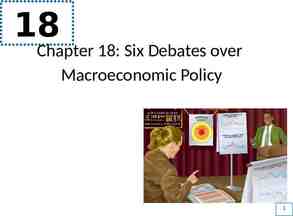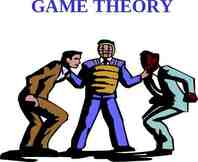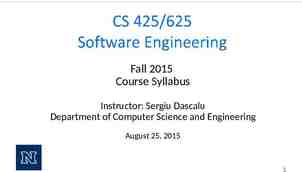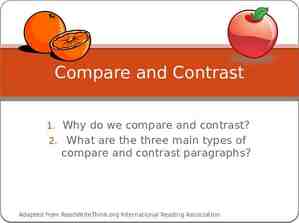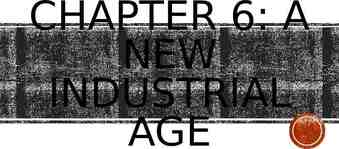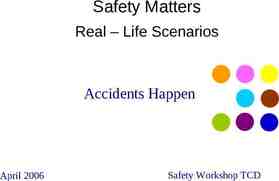INTRODUCTION TO COPYRIGHT IN INDIA By Prathiba M. Singh, Advocate,
60 Slides3.74 MB

INTRODUCTION TO COPYRIGHT IN INDIA By Prathiba M. Singh, Advocate, LLM (Cantab)

Structure of the Presentation Three parts (1) Copyright in India (2) Case Study: Copyrighting DNA (3) Infringement of Copyright

What is Copyright? “The exclusive right given by law for a certain term of years to an author, composer etc. (or his assignee) to print, publish and sell copies of his original work” (Oxford English Dictionary)

Why Copyright? Fair Play: Reward creative efforts. “Thou shall not steal” Exclusive rights for limited time Negative right: prevent copying/reproduction Copyright is necessary encourage dissemination of copyrighted works public interest

England & Wales Indian copyright law similar to England & Wales. First Copyright Act in England (and the world) 1709 Statute of Anne.

United States First Act in 1790: did not protect foreign authors Indigenous American literature suffered Today: Copyright Act 1976 one of the major copyright laws in the world

Indian Perspectives The Copyright Act 1957

Copyright in India First Act in 1914, followed by the Copyright Act 1957. 1957 Act: adopted many English provisions, introduced new ideas and concepts.

Copyright Act 1957 – Main Features Valid from 21 January 1958 Created Copyright Office and Copyright Board Introduced civil and criminal remedies against infringement

Copyright Act 1957 – Main Features (II) Performing rights societies’ rights (for instance, music royalties) Definition of categories in which copyright actually subsists International copyright Definition of infringement

Copyright (Amendment) Act 1983 and 1984 Objectives Berne and Universal Copyright Conventions grant of compulsory licences by developing countries, publication by deceased authors 1984 Act: discouraging and preventing widespread video piracy.

Copyright (Amendment) Act 1992 Defined ambit of the Copyright Board’s powers Introducing special rights for performers Assignment and licences of copyright Rights of copyright owners

Term of Copyright Depends on nature of work/owner of copyright and whether the work has been published Most works: 60 years Broadcast Reproduction: 25 years

The Nature of Copyright About Fixation, Labour, Skill and Capital

The Nature of Copyright Statute-based, no registration necessary Copyright intellectual property Combines different rights (literary works: the right to reproduce in hardback and paperback editions, the right of translation adaptation)

Labour, Skill and Capital “It is the product of the labour, skill and capital of one man which must not be appropriated by another.” (per Lord Atkinson, Macmillan v Cooper AIR 1924 PC 75)

It‘s All About the Idea: Or isn‘t It? Copyright in form or expression, not in idea: “There is nothing in the notion of copyright to prevent a second person from producing an identical result.” (Gregory Committee Report, 1952, para 9) Copyright only in material form principle of fixation

What Copyright Protects Original Literary, Dramatic, Musical and Artistic Works Cinematograph Films Sound Recordings

Literary Works Novels, poems, short stories Books on any subject Computer programmes, tables, computer databases Song lyrics

Computer Software Includes Programme Manuals Punched Cards Magnetic Tapes/Discs Computer printouts Computer programmes

Spotlight on Copyright for the Biotech industry Work in the biotech industry involving copyrightable subject matter: Modification of genes of plants, animals To identify causes of diseases To make assays for the testing of various diseases Manufacture of vaccines

DNA and Copyright 1980s/1990s: scholars proposed that biotechnology work copyrightable Copyright as alternative to patent law Diamond v Chakraborty: 447 US 303 (living organisms patentable) Practical problems prevented grants Computer industry successfully lobbied for amendment of 1976 Copyright Act

Arguments against copyrighting of DNA Facts lack originality Doctrine of merger and non-equivalence of DNA/computer programmes Utilitarian prohibitions

Arguments for Protection Copyright Subject Matter Analogy between “Literary Works” and computer programmes DNA as a Compilation Sweat of the Brow Doctrine

Copyright Subject Matter The work concerned has to be Original Work of authorship Fixed In the United States, Congress intended a wide reading of the term “literary works”

Analogy between Literary Works and Computer Programmes Genetic Sequences are strings of symbols of the nucleotides of DNA DNA sequence containing coded genetic information for the synthesis of particular protein application programme of a computer

DNA as a Compilation Combining various elements of DNA constitutes a compilation: involves assembling of pre-existing materials Selection and arrangement of sequence elements are copyrightable

“Sweat of the Brow” Doctrine Originality in the labour expended in the collection and assembly of data: adaptable to DNA sequences Researchers spend considerable time and effort to discern the sequence of a gene: they should have copyright due to hard work

Why Patents Don’t (Always) Work Patents confer monopolies and exclude competitors from conducting research Can offer rewards disproportionate to risk: Genentech Inc’s Patent [1989] RPC 147, CA Public interest would be injured if every corporation could patent anytime, anywhere. Without them, corporations may lack incentive to conduct research No guarantee for independent researchers that their efforts will pay off

Copyright and Related Rights to the Rescue? Despite conferral of a monopoly, usually another option available: Copyright could be an option in cases without inventiveness Advantage of copyright system: no ban on creation of genomes, merely royalties; licensing schemes can be regulated.

Sequence Original Literary Work? S. 3 of Copyright, Design and Patents Act 1988 defines “literary work” Includes a) table or compilation and b) computer programme DNA sequence could be literary work as well: created by human mind, written

Telegraph Code Cases Based on these, there is copyright in seemingly arbitrary instances of letters Anderson & Co v Lieber Code Co [1917] 2 KB 469 Ager v Peninsular and Oriental Steam Navigation Co. (1884) 26 Ch D 637 Ager v Collingridge (1886) 2 TLR 291 Express Newspapers plc v Liverpool Daily Post and Echo plc [1985] FSR 306

Originality Work may be original, even if derived from previous material, provided further independent skill, useful labour, knowledge or judgment have been bestowed on its creation Even if nature of subject matter can lead competent author with one solution: Walter v Lane [1900] AC 539

Infringement of Copyright in Molecular Sequences CDPA 1988, s. 16: copyright owner with exclusive right “to copy the work” 16(3): infringement by copying work “as a whole or any substantial part” Infringement cannot take place outside UK or when a legal copy has been purchased from which one adopts a scissor/paste approach: Warne & Co v Seebohm (1888) 39 Ch. D. 73

Infringement in Chemical Form? S. 178 of the CDPA 1988: “writing” defined as “any form of notation or code, whether by hand or otherwise and regardless of the method by which, or the medium in on which, it is recorded” No understanding by the human mind required: Apple Computer Inc v Computer Edge Pty Ltd [1984] FSR 496

Infringing Copy Thing in question has to derive from original literary work What is required is the reproduction of a substantial part of what is original in the copyrighted work: Warwick Film Productions Ltd v Eisinger 1 Ch 508, Ladbroke v William Hill (Football) Ltd [1964] 1 WLR 273, per Lord Pearson

Indian position - Eastern book Company case This case relates to compilation of Supreme Court judgements Test for originality The middle path approach adopted for Derivative works Sweat of the Brow Vs. Modicum of creativity U.K. approach (Ladbroke) Vs. U.S.A. (Feist) India follows the Canadian approach – CCH Canada

Case laws on Copyright There is no reported case on the copyrightability of biotech subject matter There is one case currently pending with respect to plant varieties on the basis of copyright and trade secrecy/confidential information

Case laws J. Mitra Company Pvt. Ltd. Vs. Span Diagnostics– CS (OS) No. 2020/2006 - Judgment dated 22.02.2008 passed by Ld. Single Judge of Delhi High Court, Hon’ble Mr. Justice Sanjay Kishan Kaul J. Mitra developed a highly qualitative fourth generation Hepatitis – C diagnostic kit which enable the disease to be diagnosed within 10-15 days after the virus enters the human body J. Mitra had applied for a patent on this product before the Indian Patent Office as far back as in 2000 The Patent disclosed an invention which comprised of a specific set of antigens used in specific proportions and the device built in a unique manner

Case laws J. Mitra Company Diagnostics (Contd.) Pvt. Ltd. Vs. Span Span Diagnostics copied the HCV Tridot product Span had initially opposed the grant of patent and the patent office in India had rejected the objections and had granted the patent to J. Mitra in 2006 After the grant of the patent, J. Mitra filed a case against Span Diagnostic seeking injunction against the manufacture of Signal HCV which was the copied device of Span – Argued that antigens are commonly known and the methodology is nothing but protein sequences

Case laws J. Mitra Company Pvt. Ltd. Vs. Span Diagnostics (Contd.) Vide judgment dated 22.02.2008, Hon’ble Mr. Justice Sanjay Kishan Kaul of the Delhi High Court has held that: Sufficient documents were filed showing the research conducted by J. Mitra. The international preliminary examination report issued by the PCT Office does not have a bearing on the validity of the patent. The validity patent has to be examined by the court considering the merits of the case. That the defendant showed no research or development towards its infringing product

Case laws J. Mitra Company Pvt. Ltd. Vs. Span Diagnostics (Contd.) That the defendant had not been able to show that it had developed the product or had applied for the approval of the product prior to the patent application of J. Mitra. That J. Mitra’s patent was an invention and none of the earlier U.S. patents relied upon by the defendant Span were identical to J. Mitra’s product The other products shown by the defendant are different types of tests and not the Rapid fourth generation test device as patented by J. Mitra Evaluation of W.H.O. reveals 98.9% specificity and 100% sensitivity of J. Mitra’s product

Case laws J. Mitra Company Pvt. Ltd. Vs. Span Diagnostics (Contd.) The only difference between the plaintiffs and defendants device was that J. Mitra’s device had three dots and Span’s device had two dots The life of a patent being limited in nature i.e. in this case only till 2020, it is necessary to protect the patent and restrain Span

Infringement of Copyright When (Copy)right becomes wrong

Statutory Definition Copyright Act 1957, s. 51 Infringement: exercising rights of the copyright owner Making, distributing, exhibiting and importing infringing copies of the work

Factors Determining Infringement Copying Causal Connection Subconscious Copying Indirect Copying Substantial Taking Unaltered copying Extent of defendant’s alteration Character of Plaintiff’s and Defendant’s works Nature and Extent of Plaintiff’s Effort

General Principles R.C Anand v Delux Films (1) No copyright in an idea. Violation of copyright confined to form, manner and arrangement, as well as expression of idea by the author (2) Where same idea developed in different manner, similarities happen. Court to rule on whether similarities are merely substantial or fundamental

General Principles (2) (3) Safest Test: Does the reader/ spectator/viewer have the opinion/get the unshakeable impression that the second work is a copy of the original? (“the viewer test”) (4) Same theme, different presentation Completely new work, no infringement

General Principles (3) (5) Where there are only incidental similarities, there is no copyright infringement (6) Copyright infringement piracy it must be clearly proven (7) Very difficult to prove violation of copyright of stage play by a film producer: the “viewer test” is applicable

Remedies for Copyright Infringement Strengthening Copyright, Enhancing the Reach of the Law

Remedies

Civil Remedies

Civil Remedies (2) Injunction Only effective remedy Court has to weigh the damage to the plaintiff if the injunction is not granted, as opposed to the damage to the defendant if it is Interlocutory injunction is the preferred method for preventing infringement, sometimes an ex parte injunction

Criminal Remedies

Criminal Remedies Copyright Act 1957, s.64 empowers the Police (any officer not below the rank of sub-inspector) to seize infringing copies without warrant Police Raids (Power of search, seizure & arrest without a warrant) Fines (min. 50,000-200,000 INR) Imprisonment (6 months to 3 years)

Pros and Cons of Civil Remedies PROS Judicial determination of rights Likelihood of damages award Less vulnerable to a challenge Commissioner’s seizure orders more effective

Pros and Cons of Civil Remedies (2) CONS Delays – Trial, Appeal Stages Damages not usually awarded No severe punishment for violation of rights

Pros and Cons of Criminal Remedies PROS Quick remedy Greater opportunity to quickly counteract violation, with arrest acting as a deterrent CONS Chances of seizure of goods low Difficulty in coordinating with the police

Conclusion Protection for DNA and protein sequences is in the nascent stage globally and in India; A tilt exists towards patenting; Copyright may be a viable option but there are problems with establishing priority etc., A strong copyright registration mechanism is needed if the biotech industry is to adopting Copyright protection

Conclusion Requires complete overhauling of the Copyright offices At present most copyrightable works are not registered Even copyright registrations where the traditional examination and opposition procedures are not followed, take time sometimes even 3 years to get registered For biotech industry, a vibrant and robust copyright registration regime, is necessary Priority would be difficult to establish.

